Auctions
A Record-Shattering $111 Million Monet Powers an Otherwise Staid $350 Million Impressionist and Modern Sale at Sotheby’s
Overall, the sale provided more solidity than stimulation.
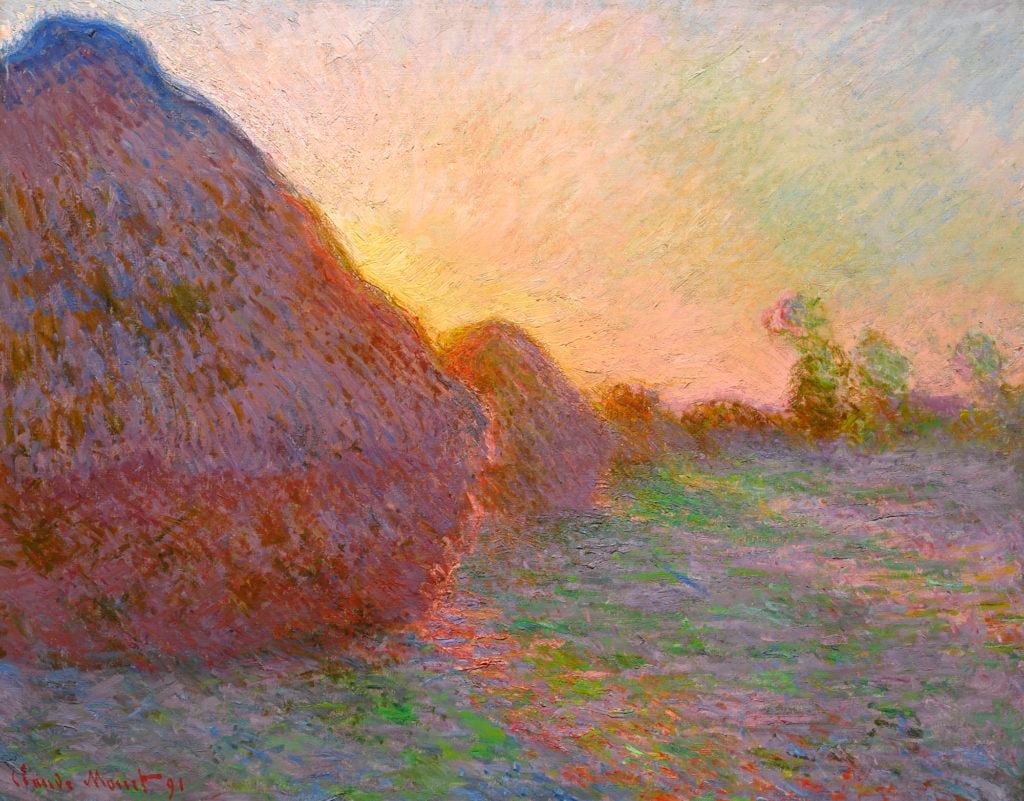
Overall, the sale provided more solidity than stimulation.

Tim Schneider

A haystack panting by Claude Monet sold for $110.7 million at Sotheby’s on Tuesday evening after eight-and-a-half minutes of sustained bidding, setting a new record for the Impressionist. But the high-wattage price somewhat belied the mood in the room and, to some extent, the reality of the bidding.
All told, Sotheby’s Impressionist and modern evening sale made $349.9 million with buyer’s premium, above its pre-sale high estimate of $337 million, even after the late withdrawal of a Picasso lot estimated at $3 million to $4 million. (Final prices, unless otherwise noted, include buyer’s premiums; pre-sale estimates do not.) Fifty-one of the 56 works consigned to the sale found buyers, securing an impressive 91 percent sell-through rate.
But turning the prism a bit leads to a different view of the sale. Nearly half the lots in the auction—25, to be exact—hammered beneath their respective low estimates. And among the two lots bought in was pre-sale highlight La Juenesse de Bacchus by French Academic painter William Bouguereau. Estimated to sell for between $25 million and $35 million, the 11-by-20-foot oil on canvas passed at $18 million after nearly two excruciating minutes of auctioneer Harry Dalmeny repeating the stalled figure like a failed mantra to ward off misfortune. (The other bought-in lots, by Joan Miró, Henri de Toulouse-Lautrec, and Camille Pissarro, were of relatively low value, all failing against low estimates of $2 million or less.)
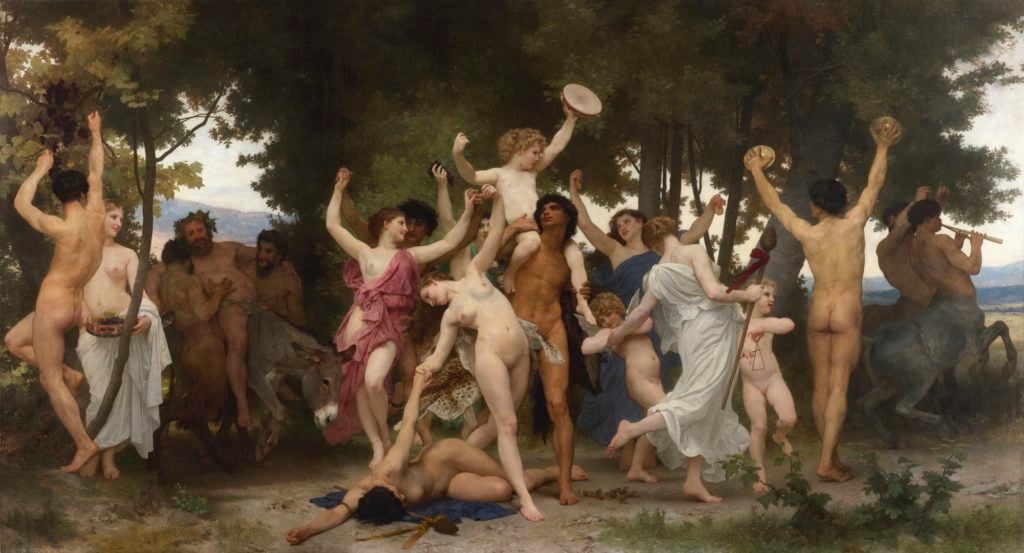
William Bouguereau, La jeunesse de bacchus (1884). Courtesy of Sotheby’s.
With the sale of Monet’s Meules (1890), Sotheby’s has—for now, anyway—secured the highest-priced work sold in New York’s May auction week, besting Paul Cézanne’s $52 million Bouilloire et fruits (1888–90), which sold at Christie’s on Monday night.
Like most of the Impressionist works that soar at auction, Meules was fresh to the market: It had been ensconced in the same private collection since 1986, when it sold at Christie’s New York for $2.5 million (or $6 million in 2019 dollars, accounting for inflation). This evening, it made 44 times that figure, selling to a woman in the second-to-last row of the salesroom. The luminous canvas is one of only eight paintings from the haystack series that remain in private hands. Still, Thomas C.Danziger, the attorney for the work’s consignor, felt the towering final price was more than justified. “It’s a true masterpiece,” he told artnet News by email, “and in the Impressionist market, Monet talks.”
However, the auction’s $349.9 million grand total fell about $50 million short of Christie’s $399 million equivalent sale last night. Of course, there is always more nuance than the headline figures. But at a glance, Sotheby’s success with the Monet could be portrayed as a case of winning the battle but losing the war.
Sotheby’s sale also lacked the estate-sourced firepower of its counterpart at Christie’s, whose auction boasted coveted works from the collection of late publishing magnate S.I. Newhouse. Sotheby’s most high-profile estate was that of the late Dallas collector Irvin Levy and his widow, Joan Schnitzer Levy. The four works by Pierre Bonnard, Gustave Caillebotte, Paul Gauguin, and Henry Moore made a combined total of $26.1 million, outperforming their pre-sale estimate of $16.35 million to $22.5 million.
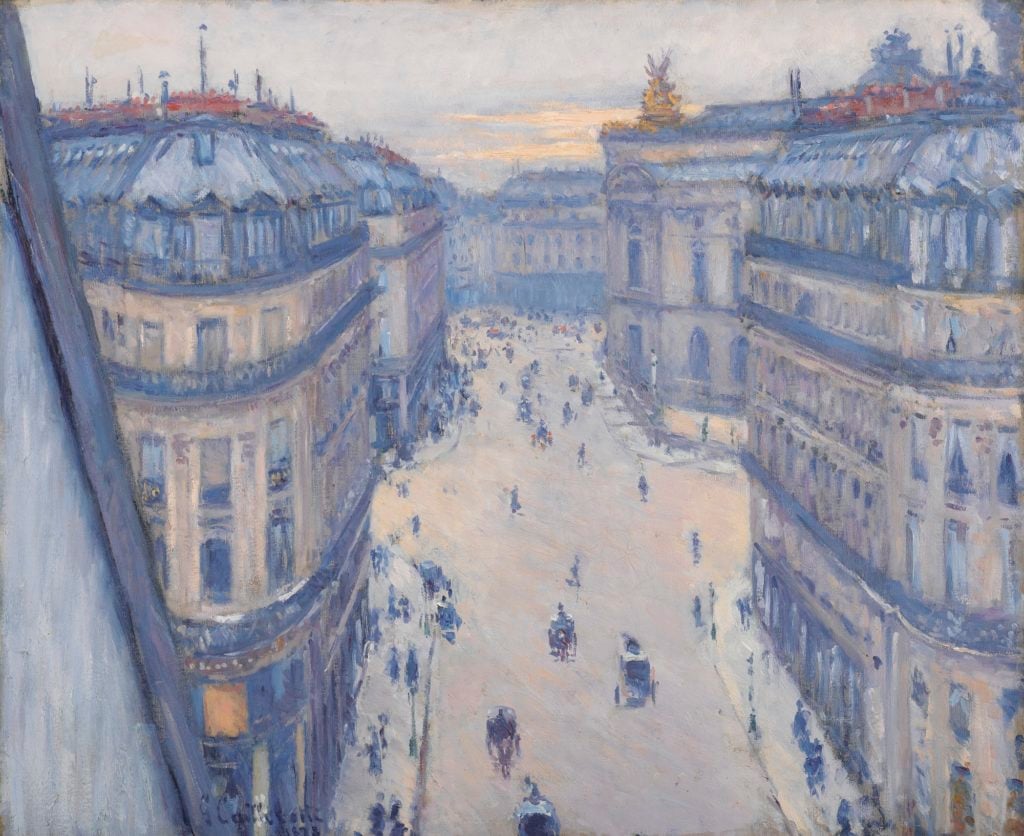
Gustave Caillebotte, La rue halevy. Vue du sixieme etage (1878), from the collection of Irvin Levy and Joan Schnitzer Levy. Courtesy of Sotheby’s.
While it lagged behind Christie’s, Sotheby’s Impressionist and modern sale did top the house’s equivalent auction in May 2018, which pulled in just over $318 million against a pre-sale estimate of $307 million to $378 million. Nearly half of last year’s total ($157 million) arrived from just one work: Amedeo Modigliani’s 1917 Nu couché (sur le côté gauche). In contrast, this evening’s sale was a slightly less top-heavy affair, drawing about half its total from what Sotheby’s calls “13 works of classic Impressionism” (led by Meules) that collectively fetched $160 million.
Only nine lots were accompanied by in-house guarantees and/or third-party irrevocable bids, significantly less than in 2018. CEO Tad Smith said on Sotheby’s latest quarterly earnings call that the reduction in guarantees is a sign of a confident market that does not need to sacrifice upside for assurance that a work will sell for a prearranged price. But it remains to be seen whether tonight’s largely subdued bidding will change the strategy of the house, consignors, or speculators six months from now.
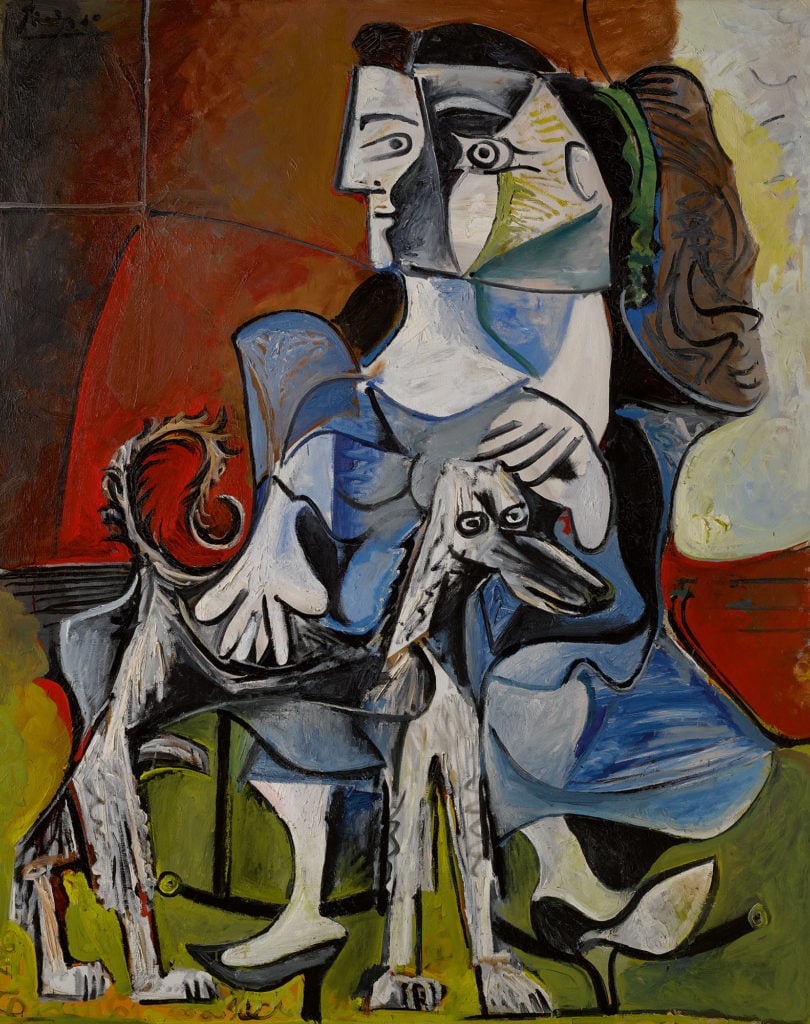
Pablo Picasso, Femme au chien (1962). Courtesy of Sotheby’s.
Apart from Meules, the biggest hit of the evening was Pablo Picasso’s 1962 canvas Femme au chien, which depicts the artist’s second wife Jacqueline Roque and his beloved Afghan hound Kaboul. Like most of the best-performing works, it returned to market after a long absence: its consignor, a private Japanese collector, held it for roughly 29 years.
Tonight, he offered the painting without a financial guarantee, allowing it to live or die by its $25 million to $30 million pre-sale estimate. It lived large, hammering at $48 million, or $54.9 million with premiums. According to Sotheby’s, the buyer was Wynn Fine Arts. (It was unconfirmed at press time whether that entity is a new name for mega-collector Steve Wynn’s puzzling art-sales company previously known as Sierra Fine Art, LLC.)
A second notable Picasso in the evening’s sale was Mousquetaire à la pipe (1968), consigned from a private American collection and estimated at $20 million to $30 million. Exhibited in the 1976 Venice Biennale, the painting continued Picasso’s 1960s-era interest in wrestling with the Old Masters, particularly Diego Velásquez and Rembrandt, two of his artistic role models who frequently depicted the musketeer figure. The work hammered below estimate at $18 million, but reached $20.8 million with fees.
On the positive side of the ledger, Chaïm Soutine’s La Femme en rouge elicited a four-and-a-half-minute bidding skirmish that pushed the hammer price to $9.4 million, well above the $8 million high estimate. Former Christie’s Impressionist art chairman-turned-private dealer Thomas Seydoux won the work, according to the Baer Faxt newsletter, for $10.97 million with premiums.
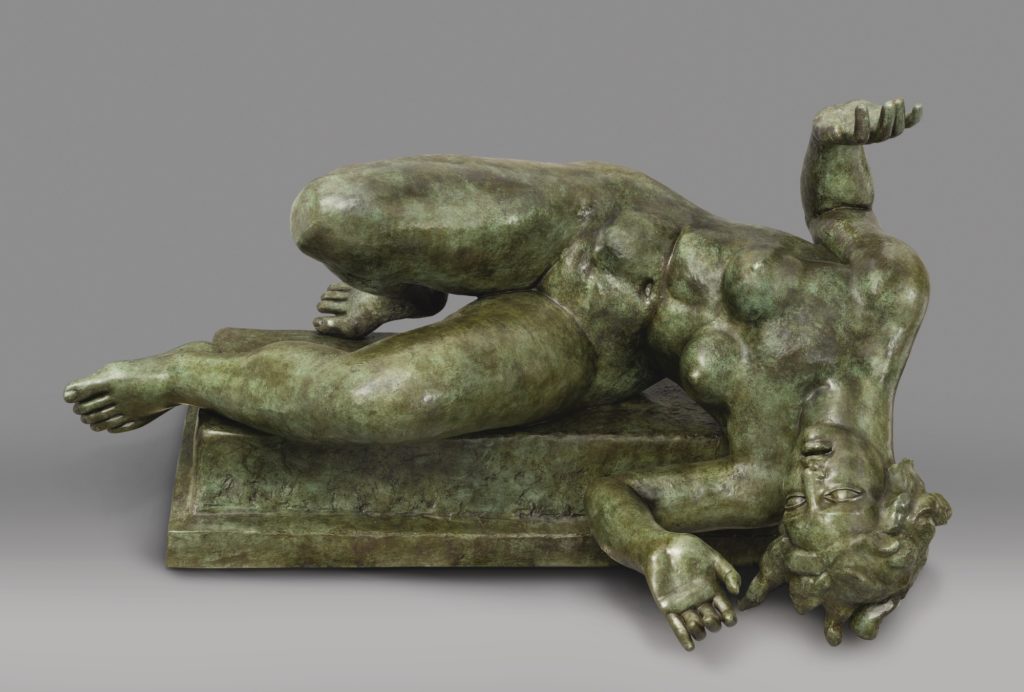
Artistide Maillol, La riviere (ca. 1983–40). Courtesy of Sotheby’s.
A final note of interest could be found in an edition of Aristide Maillol’s bronze La Rivière, estimated at $2 million to $3 million. The work brought a bit of covert intrigue into the evening. It was the only lot of the sale to be offered “naked,” meaning without a reserve price—an unorthodox strategy to spur bidding that helped drive the conversation, if not the price, for David Hockney’s record-breaking $80 million Portrait of an Artist (Pool with Two Figures) at Christie’s last November. However, after a flurry of bidding in the opening half-minute, the work hammered below estimate at $1.7 million. (It reached just over $2 million with premium.)
In that sense, the Maillol could be portrayed as somewhat of an emblem of the evening: a quality work consciously positioned to test the strength of the market, with its degree of success depending largely on the eye of the beholder.